Back from the
Army
In 1913 William Herlingshaw (probably still using
the name
William Shaw) returned to Teesside
after
his seven year army enlistment. As was the
norm he was assigned to the reserves.
He then lived with the Wilkinson family at 102
Stapylton Street, Grangetown and later in 1913 he married their daughter Sarah Ann,
just 21 years old, at the nearby South Bank
Wesleyan Chapel in the High Street. Isabella Moody and William Lang were witnesses to
the ceremony. Isabella was probably Sarah Ann's aunt (her father's
sister) who married George Moody in 1876. Or she could have been
Isabella and George's daughter who was also called Isabella, aged 21 at the
time, about the same as Sarah.
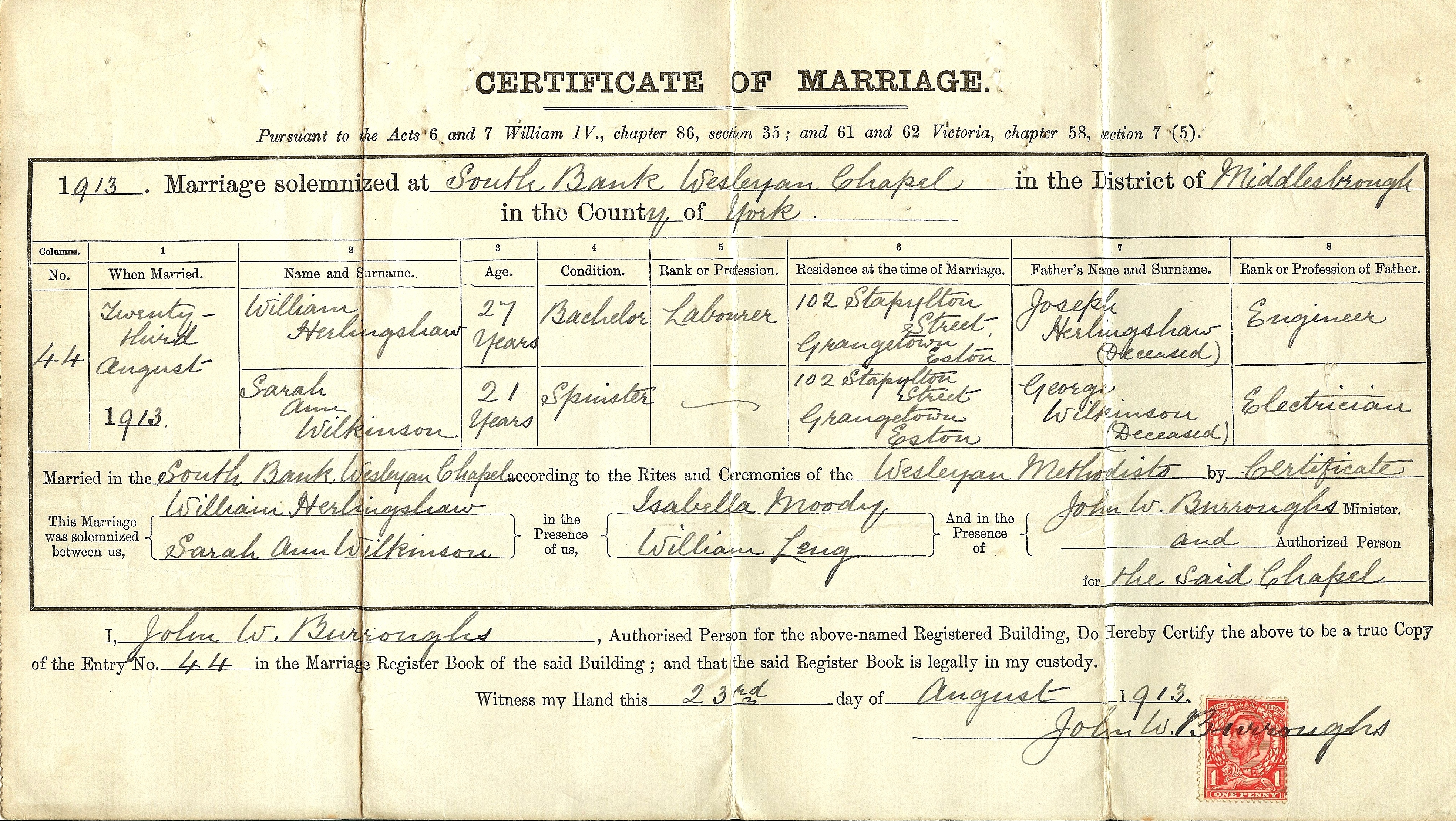
An odd thing in the official wedding record is that William declared that his
father was Joseph Herlingshaw, deceased, a former engineer. This is
clearly wrong and was obviously a reference to Joseph Shaw,
William's uncle (his mother's brother) who became his surrogate father. It is not clear
whether Joseph, or his wife Mary actually attended the wedding,
although they were alive at the time and living nearby in
South Bank.
Both died only a few years later, in 1916. William was actually 28,
not 27 as stated.
Sarah Ann's father was declared as George Wilkinson, deceased, an electrician. Her
mother was Sarah née Ward and it appears
from the certificate below that she was
illiterate.
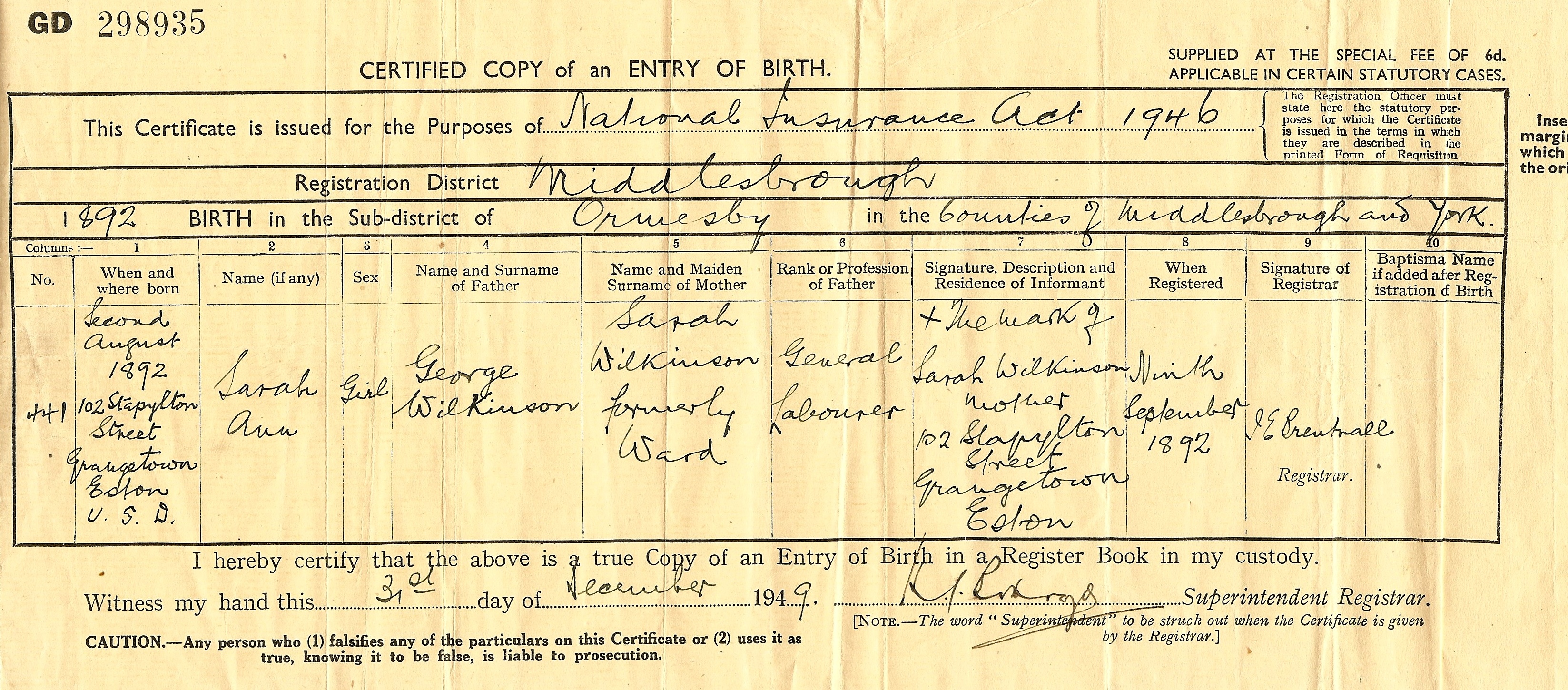
William and Sarah's first child Olive was born on
June 27th 1914. Marriage and the child's upbringing were soon to be
interrupted by WW1 and as a reservist William was one of the first
to be recalled, on August 4th 1914 only a week after war had
started and two or three days later he was sent to Guernsey to
rejoin the second battalion of The Yorkshire Regiment. He fought in the Battle of Loos towards the end of 1915
receiving bullet wounds including one to his neck via a hand and as a result
was discharged in February 1916 as "no longer suitable for active
service".
Part of one bullet remained in his body for the rest
of his life, another pictured below was kept as a souvenir and is
still in possession of the family. William
was awarded the WW1 war badge in April 1917 to mark his honourable
discharge.
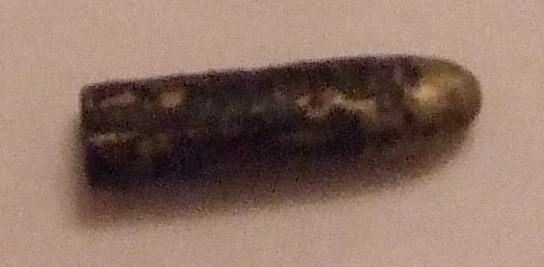
Below are Sarah Ann and baby Olive in a photograph
from the end of 1915 or early 1916. This photograph was probably
taken to send to husband William in the army, perhaps for Christmas.
Unfortunately Olive died in 1917 when only 3½ years old, their second child to die that year.
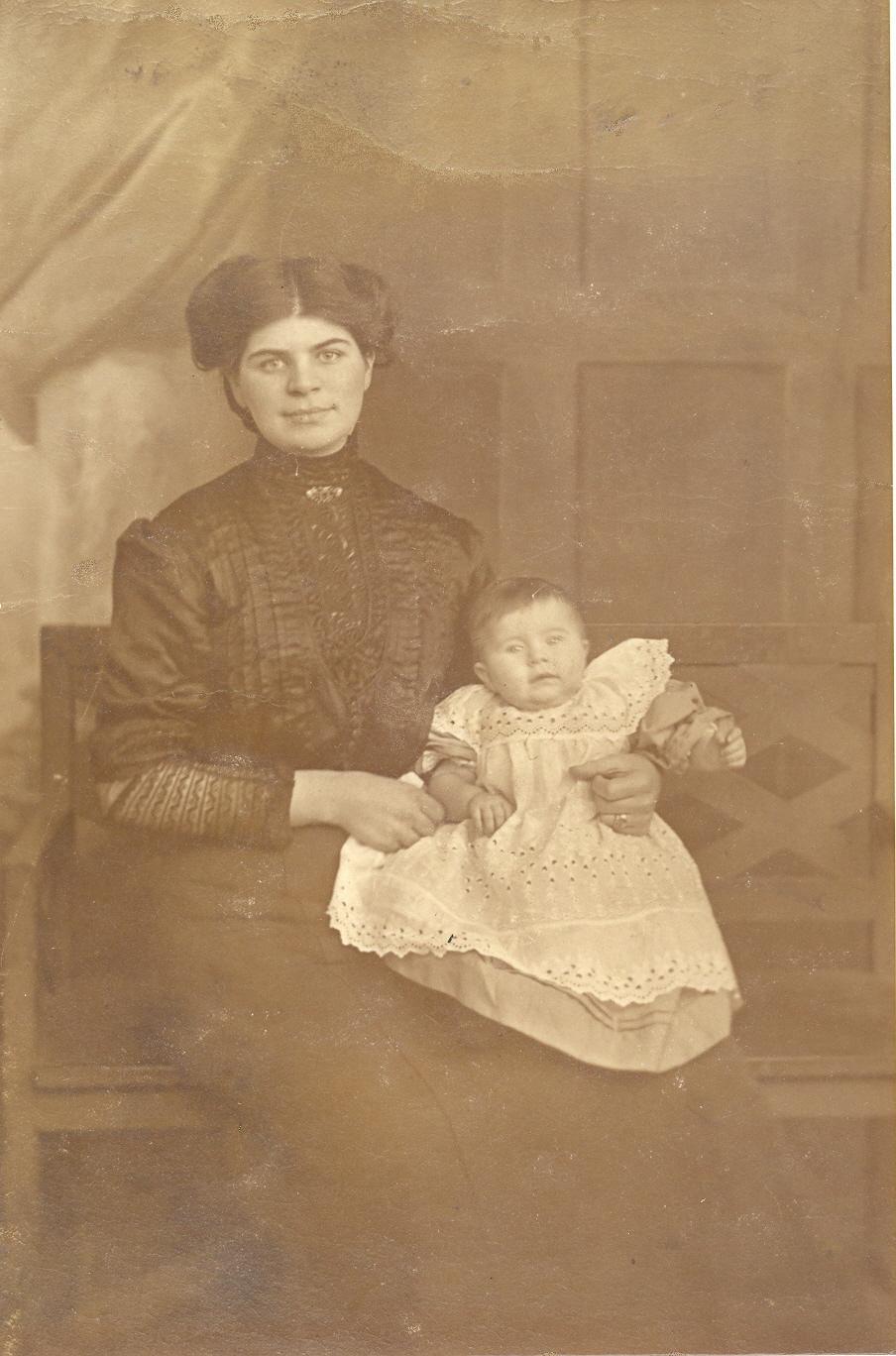
This was William Herlingshaw's pocket watch. It has a Swiss-made
Revue-Thommen model 31 movement but no brand name on the dial nor
inside - not
uncommon at the time. This particular movement was made primarily
for the UK market. The
British-made 9ct gold case was hallmarked in London in 1920 and the
hallmark "sponsor" was the City Watch Case Company Ltd., run by Louis Arnould in Cox's Court,
London EC1, hence the LA punch marks (although it looks as
though it might in fact have been made by Dennison in the Midlands). The case has the serial number
65823 in two places and the movement uses an interesting snail cam regulator
and a temperature compensated balance wheel - so was fairly up
market for the time. It is close to being 100 years old and is still going strong
to
within 5 seconds a day, excellent amplitude of 260°
and low beat error. However, that is in the face-up position
- with the winder up (common for a pocket watch) the daily gain is
about 2 minutes.
How and when William came to own the watch is unknown as it is was
fairly expensive - although apparently it spent regular periods in the local pawn shop. There used to be a
gold chain attached, known as an "Albert" (after Queen
Victoria's husband) but it has disappeared.
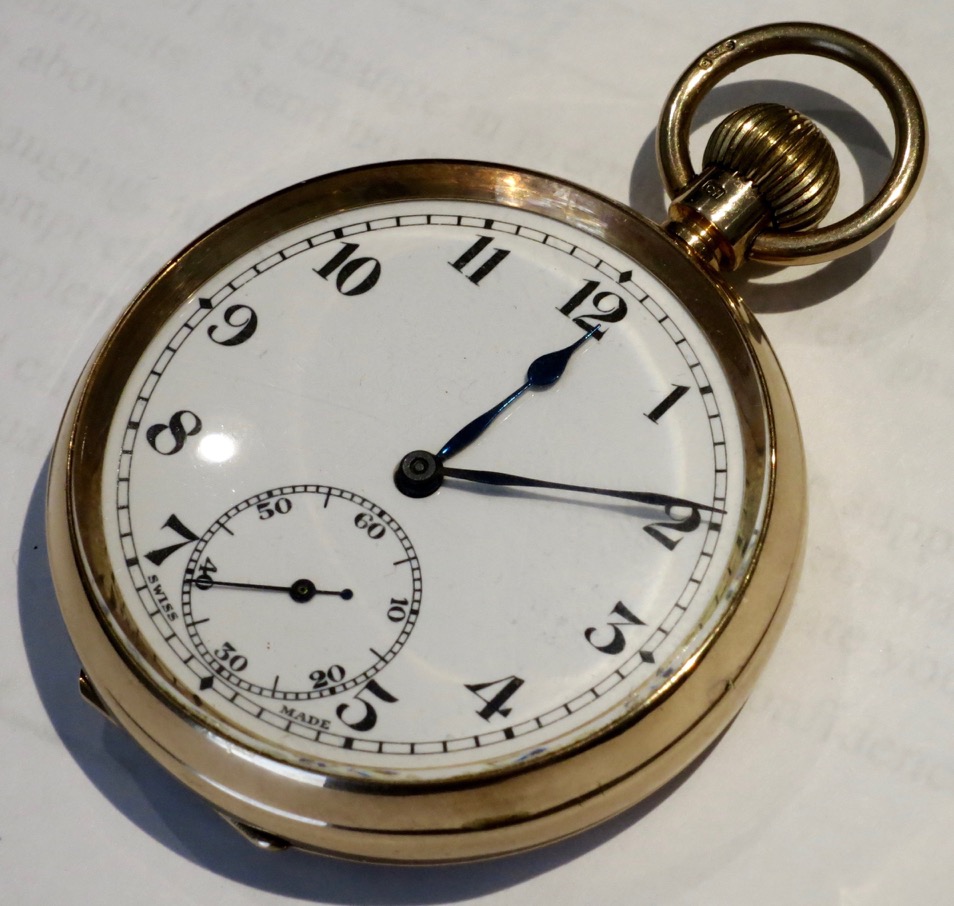
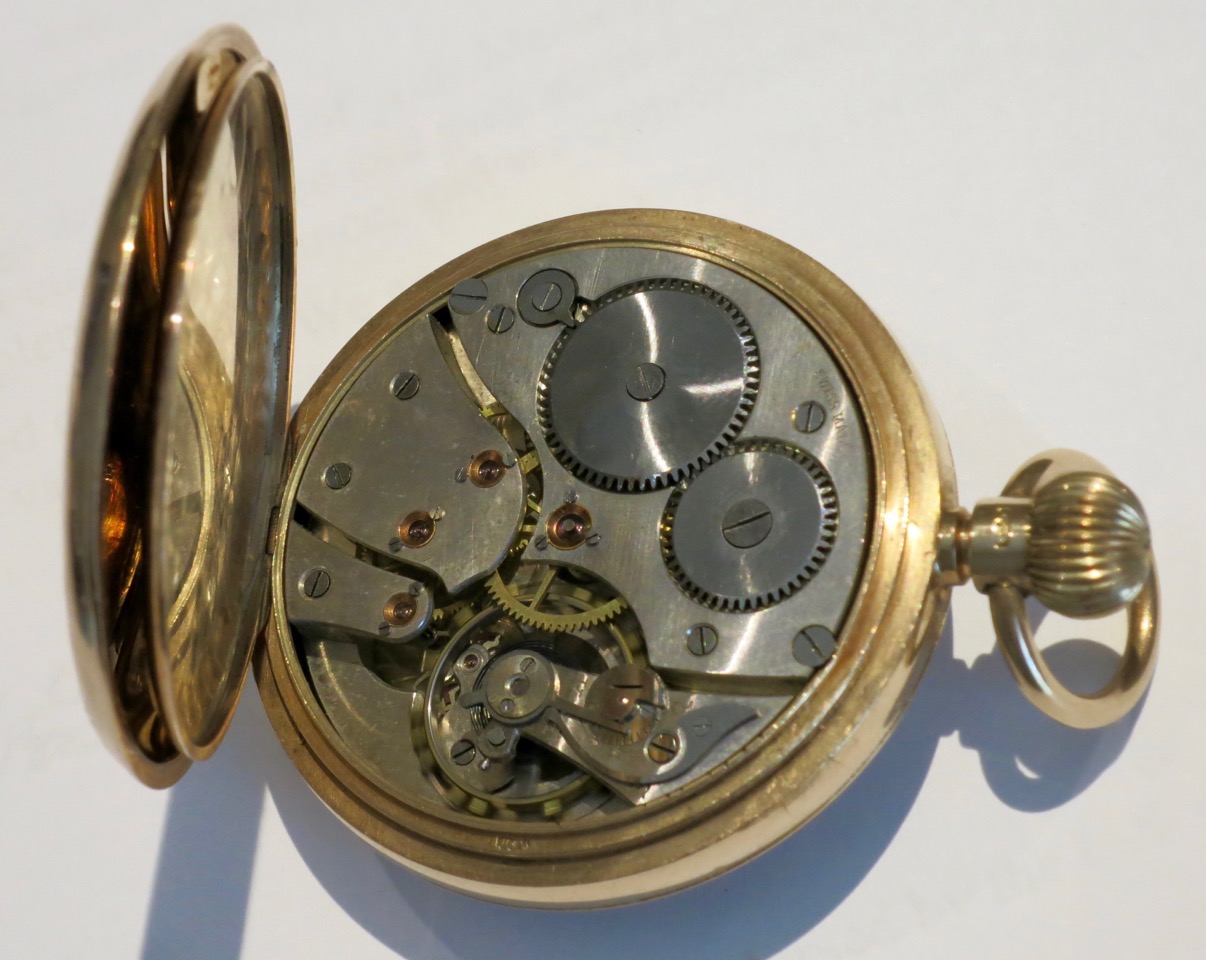
George Wilkinson, Sarah Ann's father was George W Wilkinson and
he was born in York about 1856. Sarah Ann's mother, Sarah Ward was born in
Tipton, Staffordshire in about 1857.



The contents of this site are copyright © 2021, Ken Herlingshaw
|



